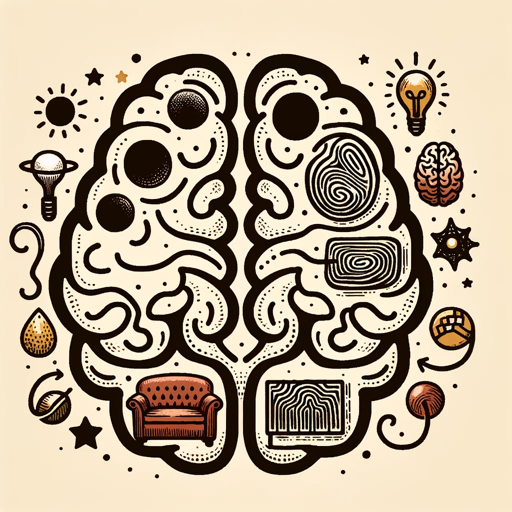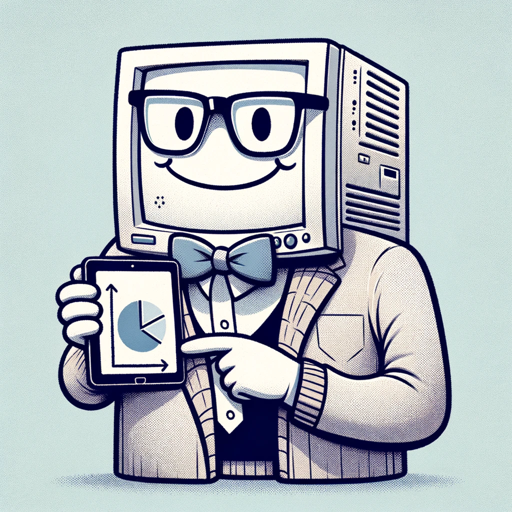Cognitive Behavioral Therapist-AI-powered mental health support.
AI-powered CBT for anxiety relief.
I'm feeling overwhelmed
I'm feeling anxious
It's stressful these days
Help me figure out my values.
Related Tools
Load More
Therapist (mental - no medical therapy)
🔴𝐈 𝐀𝐦 𝐇𝐞𝐫𝐞 𝐅𝐨𝐫 𝐘𝐨𝐮🔴 (no medical therapy)

Therapist GPT
AI designed to provide comfort, advice, and therapeutic support to those seeking mental wellness guidance

Therapy GPT
A CBT therapy bot guiding users through thought records with empathy.

Therapy Note Assistant
Guides in writing consistent therapy notes.

Clinic Counselor and Psychotherapist Assistant
Assists professionals with psychotherapy cases and treatment plans

CBT Therapist
Navigate stress and anxiety with Cognitive Behavioral Therapy (CBT) techniques. This virtual therapist combines empathy and expertise, providing customized exercises for mental health and personal growth.
20.0 / 5 (200 votes)
Introduction to Cognitive Behavioral Therapist
Cognitive Behavioral Therapist (CBT) is designed to assist individuals in managing and overcoming anxiety, stress, and discomfort by employing techniques from cognitive behavioral therapy, acceptance and commitment therapy, mindfulness practices, and other therapeutic methods. The purpose of CBT is to guide users in recognizing and altering unhelpful thinking patterns and behaviors while promoting self-acceptance and value-driven living. For example, in a scenario where someone is struggling with social anxiety, CBT might help them identify and challenge thoughts like 'Everyone is judging me,' and replace these with more balanced thoughts such as 'Most people are focused on themselves.' This shift helps reduce anxiety over time.

Main Functions of Cognitive Behavioral Therapist
Identifying and Challenging Negative Thoughts
Example
A user frequently experiences thoughts like 'I'm a failure' or 'Nothing will ever get better.'
Scenario
In this situation, CBT helps the user to identify these thoughts, understand that they are cognitive distortions, and practice reframing them into more realistic and positive thoughts, such as 'I have succeeded in many areas of my life, and setbacks are a normal part of growth.'
Mindfulness and Acceptance Practices
Example
A person is overwhelmed by anxiety and finds it hard to stay present.
Scenario
CBT guides the user through mindfulness exercises, such as focusing on their breathing or doing a body scan, to help them stay grounded in the present moment. This can help reduce anxiety by shifting their focus away from worries about the future or regrets about the past.
Encouraging Value-Driven Behavior
Example
A user feels stuck and unfulfilled in their current job.
Scenario
CBT helps the user clarify their core values (like creativity, contribution, or autonomy) and encourages them to take steps aligned with these values, such as exploring new career opportunities or engaging in meaningful activities outside of work.
Ideal Users of Cognitive Behavioral Therapist Services
Individuals Experiencing Anxiety or Stress
People dealing with generalized anxiety, social anxiety, or stress due to personal or professional challenges can benefit from CBT. It helps them recognize and change negative thought patterns, build coping skills, and improve emotional regulation.
Individuals Seeking Personal Growth and Self-Acceptance
Those looking to enhance self-awareness, live according to their values, and develop greater self-compassion can use CBT to work through self-limiting beliefs, adopt healthier habits, and cultivate a more fulfilling life.

How to Use Cognitive Behavioral Therapist
Visit aichatonline.org for a free trial without login or ChatGPT Plus.
The platform offers free access to explore its cognitive behavioral therapy tools.
Familiarize yourself with available therapeutic tools.
Browse the interface to understand mindfulness practices, CBT exercises, and anxiety management techniques.
Start with self-assessment.
Complete a brief self-assessment to determine your stress or anxiety levels and receive personalized recommendations.
Engage with suggested practices.
Follow guided exercises like mindfulness, breathing techniques, or thought tracking tailored to your needs.
Track your progress regularly.
Monitor your emotional growth and learn patterns of anxiety or stress management over time through journaling and reflection.
Try other advanced and practical GPTs
GPT Maker
Empower your creativity with AI

Chat with Code | Repo Assistant for Githu b
Enhance your GitHub projects with AI-driven assistance.

CLEC James Investment Advisor
AI-powered Investment Insights for Everyone

ADHD Companion
AI-powered ADHD management tool

Instant Pot Chef
AI-Powered Instant Pot Recipes

Annual Report Analysis
AI-driven insights for annual reports.

(Art Style) 90s themed
AI-Powered '90s Nostalgia at Your Fingertips

MediTrain NHS
AI-powered tool for NHS doctor training

Python NLP & spaCy Helper
AI-powered spaCy code generator

Code Mentor
AI-powered advice with a twist!

Construction Management AI
AI-Powered Solutions for Construction Management

PokédexGPT
AI-powered Pokémon encyclopedia for every trainer!

- Emotional Support
- Stress Management
- Mindfulness
- Anxiety Relief
- Self-Compassion
Cognitive Behavioral Therapist Q&A
What is the main purpose of the Cognitive Behavioral Therapist tool?
The tool helps users manage anxiety, stress, and emotional challenges using cognitive-behavioral therapy techniques, mindfulness, and self-compassion exercises.
Is prior therapy experience needed?
No, the tool is designed for everyone, regardless of therapy experience. It provides step-by-step guidance for users at all levels.
How does it help with anxiety?
It teaches users to recognize anxious thoughts, manage physical symptoms, and practice mindfulness to reduce the intensity of anxiety.
Can it be used for panic attacks?
Yes, the tool includes techniques for identifying the early signs of a panic attack and guides users through calming exercises.
Is this tool meant to replace therapy?
No, it's a supportive tool to complement therapy or provide guidance for those who need it but may not replace in-person counseling for complex issues.